|
|
|
|
|
||||||||||
HOME > the spirit of the brabd nihonbashi-bijin > Aesthetics of Iki–Natives of Edo
Intelligence naturally generated from beneath the surface of women and the dignity produced by intelligence develops in Nihonbashi-bijin, Japan Beauty from Edo-Tokyo, who is beautiful in body and mind. And as such, the Nihonbashi-bijin brand was born from the wisdom passed down from the Edo period. So we asked Mr. Tsunehiko Yoshi-i, the general manager of Mitsui Bunko, the largest business archives in Japan, for an explanation of the authentic traditions passed down to Nihonbashi.
Yugen and Nihonbashi-bijin
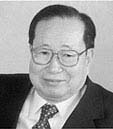
Mr. Tsunehiko Yoshi-i
Executive Director and General Manager of Mitsui Bunko
Executive Director and General Manager of Mitsui Bunko
Mitsui families that saved Noh from a crisis
Noh was established in the Muromachi period (1336-1573) and carefully preserved by policymakers in the Edo period (1603-1867), but was in crisis after the Meiji Restoration.
As you may know, there was a certain period during the Bunmei-Kaika (civilization and enlightenment) when traditional culture was suppressed. During this period, many Noh schools faced a crisis and were disappearing. The ruin of feudal lords and samurai families who had protected the art represented major damage for them.
In the late 1870s, however, the government learned from foreign countries how important it was to protect traditional culture and started to preserve it. The Mitsui House saved Noh from the crisis. Their achievement deserves high praise.
No families other than the Mitsui families contributed to the preservation and development of Noh over such a long period. People from the Kita-ke Mitsui, Minami-ke Mitsui, Muromachi-ke Mitsui, Isarago-ke Mitsui and Koishikawa-ke Mitsui families had enjoyed watching the Kanze-style Noh from the Edo period. In addition, they not only watched Noh but also acquired high culture since childhood by learning Noh dance and practicing Noh songs.
Noh was established in the Muromachi period (1336-1573) and carefully preserved by policymakers in the Edo period (1603-1867), but was in crisis after the Meiji Restoration.
As you may know, there was a certain period during the Bunmei-Kaika (civilization and enlightenment) when traditional culture was suppressed. During this period, many Noh schools faced a crisis and were disappearing. The ruin of feudal lords and samurai families who had protected the art represented major damage for them.
In the late 1870s, however, the government learned from foreign countries how important it was to protect traditional culture and started to preserve it. The Mitsui House saved Noh from the crisis. Their achievement deserves high praise.
No families other than the Mitsui families contributed to the preservation and development of Noh over such a long period. People from the Kita-ke Mitsui, Minami-ke Mitsui, Muromachi-ke Mitsui, Isarago-ke Mitsui and Koishikawa-ke Mitsui families had enjoyed watching the Kanze-style Noh from the Edo period. In addition, they not only watched Noh but also acquired high culture since childhood by learning Noh dance and practicing Noh songs.
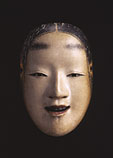
Important cultural asset apparently made by Magojiro
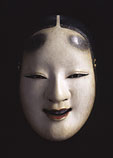
Art treasure
Ko-omote apparently made by Tatsuemon
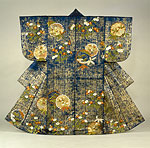
Kon-jusu-ji Setsurin Sho-chiku-kiku-tampopo Moyo Nuihaku
Masks, costumes, and Noh theater
Because of such a background, a great number of Noh masks and costumes were preserved by the Mitsui House. Among them, many Noh masks contributed by Kongo School when they were temporarily abolished are one of the greatest collections in the Mitsui Memorial Museum.
Onna-men (female mask) apparently created by Magojiro is designated an important cultural asset (see picture). This mask by Magojiro has mixed expressions of elegance and mysteriousness, and it is said that he put the shadow of his dead wife in it, as shown by the inscription of “hon (original), Kongo, Magojiro-saku (created by Magojiro), Omokage (shadow)” on its back. The Ko-omote (Youthful Beauty) mask, an art treasure apparently made by Tatsuemon (see picture), is one of the three masks of yuki (snow), tsuki (moon), and hana (flower) named and cherished by Toyotomi Hideyoshi, a feudal ruler in the 16th century. Those artworks can be said to be the ideal of yugen (profound and mysterious) in the long history of Noh, and no other mask craftsmen have ever created works superior to these.
Many Noh costumes are handed down in the Mitsui House, which originally was a kimono-fabric shop. The most excellent work among those is “Kon-jusu-ji Setsurin Sho-chiku-kiku-tampopo Moyo Nuihaku (Patterns of snow rings, pine, bamboo, chrysanthemums and dandelions embroidered with foil thread on the navy-blue satin texture)” shown by the picture. Patterns of bamboo embroidered with gold foil, and snow rings, bamboo grasses and chrysanthemums expressed with colorful threads are strikingly beautiful and dazzlingly gorgeous. This artwork is a world-class costume masterpiece.
Mitsui House used to have a Noh theater where Noh performances were practiced and appreciated. Photos still exist today of the Noh theater in the house of Mitsui Hachiroemon Takamine, the Mitsui families ユ eldest son, built at Imai-cho 42, Azabu-ku, in the late Meiji era (1868-1912). Auditoriums on the stage ユs front and side-fronts were splendid with white gravel. Guests from foreign countries were also invited, including the Prince of Wales (latter-day Edward VIII) who enjoyed the banquet while appreciating a Noh drama on April 21, 1922, when he was visiting Japan. Although the house had also been used as a guest palace for national guests until Emperor Taisho ユs Akasaka Palace was built, it unfortunately burned down in World War II.
Because of such a background, a great number of Noh masks and costumes were preserved by the Mitsui House. Among them, many Noh masks contributed by Kongo School when they were temporarily abolished are one of the greatest collections in the Mitsui Memorial Museum.
Onna-men (female mask) apparently created by Magojiro is designated an important cultural asset (see picture). This mask by Magojiro has mixed expressions of elegance and mysteriousness, and it is said that he put the shadow of his dead wife in it, as shown by the inscription of “hon (original), Kongo, Magojiro-saku (created by Magojiro), Omokage (shadow)” on its back. The Ko-omote (Youthful Beauty) mask, an art treasure apparently made by Tatsuemon (see picture), is one of the three masks of yuki (snow), tsuki (moon), and hana (flower) named and cherished by Toyotomi Hideyoshi, a feudal ruler in the 16th century. Those artworks can be said to be the ideal of yugen (profound and mysterious) in the long history of Noh, and no other mask craftsmen have ever created works superior to these.
Many Noh costumes are handed down in the Mitsui House, which originally was a kimono-fabric shop. The most excellent work among those is “Kon-jusu-ji Setsurin Sho-chiku-kiku-tampopo Moyo Nuihaku (Patterns of snow rings, pine, bamboo, chrysanthemums and dandelions embroidered with foil thread on the navy-blue satin texture)” shown by the picture. Patterns of bamboo embroidered with gold foil, and snow rings, bamboo grasses and chrysanthemums expressed with colorful threads are strikingly beautiful and dazzlingly gorgeous. This artwork is a world-class costume masterpiece.
Mitsui House used to have a Noh theater where Noh performances were practiced and appreciated. Photos still exist today of the Noh theater in the house of Mitsui Hachiroemon Takamine, the Mitsui families ユ eldest son, built at Imai-cho 42, Azabu-ku, in the late Meiji era (1868-1912). Auditoriums on the stage ユs front and side-fronts were splendid with white gravel. Guests from foreign countries were also invited, including the Prince of Wales (latter-day Edward VIII) who enjoyed the banquet while appreciating a Noh drama on April 21, 1922, when he was visiting Japan. Although the house had also been used as a guest palace for national guests until Emperor Taisho ユs Akasaka Palace was built, it unfortunately burned down in World War II.
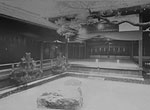
Noh stage in the house in Imai-cho
Photos provided by: Mitsui Bunko and Mitsui Memorial Museum
Experience of yugen
We know about Noh's attractions, artistic values, and history from the cultural assets of Noh masks and costumes handed down in the Mitsui House.
We will continue to make plans for exhibits at the Mitsui Memorial Museum to show the important treasures to the public.
Zeami, the founder of Noh, used the term “yugen” to describe beautiful and gentle gracefulness.
I would like Nihonbashi-bijin to experience the fundamental beauty of yugen exceeding superficial beauty, at the Mitsui Memorial Museum.
We know about Noh's attractions, artistic values, and history from the cultural assets of Noh masks and costumes handed down in the Mitsui House.
We will continue to make plans for exhibits at the Mitsui Memorial Museum to show the important treasures to the public.
Zeami, the founder of Noh, used the term “yugen” to describe beautiful and gentle gracefulness.
I would like Nihonbashi-bijin to experience the fundamental beauty of yugen exceeding superficial beauty, at the Mitsui Memorial Museum.
|



